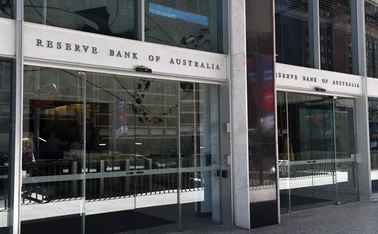
ESG reserves adoption challenged by reliance on sovereign bonds

Central banks are increasingly focused on adopting environmental, social and governance (ESG) factors into their monetary policy and reserve management operations. However, these institutions face two main hurdles to meaningfully transforming their portfolios.
First, their key investment asset is government bonds, which generally lack ESG credentials – US Treasuries are the most popular. These reserve assets are non-compliant with ESG and, due to their high liquidity and widespread use, are currently irreplaceable.
The second obstacle is liquidity: ESG bonds offer insufficient liquidity to central banks. Although issuances have exponentially grown over the past five years from tens of billions to hundreds of billions of US dollars, the pool of eligible assets remains tiny in comparison to central banks’ total reserve assets, which globally hover around $14 trillion.
“We find that the biggest limitation for central banks is the composition of their portfolios,” says Marco Ruiz, engagement manager for the World Bank’s Reserves Advisory & Management Parternship (Ramp). “They are heavily allocated to government bonds, and it is very difficult to implement any kind of ESG strategy in those instruments.”
However, this has not stopped international organisations, such as the World Bank and the European Commission (EC), from implementing new strategies to boost the issuance of high-quality ESG assets.
ESG surge
Green bond issuance has increased rapidly over the past five years. It was recorded at $44.6 billion globally in 2015, while, in the first 10 months of this year, issuances have risen to $390.7 billion according to the Climate Bonds Initiative. A market survey published by the group in late October foresees green bond investments reaching $1 trillion in 2022.
“Investor interest in green bonds has brought forth a sharp increase in supply,” says Arnab Das, global market strategist at Invesco. Central banks have participated in this investment surge. According to Central Banking’s Reserve Benchmarks 2021, central banks have increased their exposure to green and social bonds during the past year.
In total, 42.9% of 42 participating central banks reported they invest in such instruments, up from 30.5% in 2020. Still, most institutions only allocate a small share of their portfolios to these assets (between 0% and 2%).
The policy response to the Covid-19 pandemic has also contributed to boost the issuance of social bonds. The EC’s temporary Support to mitigate unemployment risks in an emergency (Sure) started issuing social bonds in October 2020. Social bonds raise funds for new and existing projects with positive social outcomes.
The EC aligned these issuances with the Social Bond Principles of the International Capital Market Association. Markets warmly welcomed the initiative. The first Sure transaction attracted “the largest-ever order book for any deal in the history of the global bond markets, of €233 billion ($269 billion)”, the EC said at the time. Until May 2021, the EC issued €89.64 billion of social bonds in seven issuances, making it the world’s largest social bond scheme.
Authorities in advanced economies – especially in Europe – have taken the lead in ESG finance. But the emerging world is starting to catch up, and new initiatives are proving very successful. For example, in July 2021, Benin issued Africa’s first social bond in international markets. The proceeds of the bond were to be used to finance wider access to portable water sources. The €500 million on offer was oversubscribed, with investors demanding more than twice that amount.
Also in 2021, the governments of Chile and Mexico carried out their first social bond issuances. However, while important for the global development of ESG finance, initiatives in emerging markets will be unable to solve the issue of liquidity for reserve managers, given they will likely lack the credit rating demanded by central banks.
The gap in liquidity
The lack of liquidity means ESG assets are a long way from becoming a key component of reserve portfolios. “Some people may focus on the headline number in ESG issuance, but when you consider the typical investment universe it is small. When you’re looking at, for example, foreign reserves, we’re talking about $14 trillion,” says Ruiz.
The pool is even smaller when you exclude issuances that are non-compliant with central bank criteria. “We are probably talking about 5%–10% of the green bond market. That is why, if you really want to have some sort of ESG implementation, you have to go beyond thematic bonds,” he adds.
According to a 2021 World Bank survey, reserve portfolios worldwide invest, on average, around 35% of their resources in government bonds, 25% in bank deposits, 14% in money-market instruments, 12% in supranational bonds and 5% in gold. Equity and corporate bonds, which offer more ESG securities, represent an even lower share of reserves.
This limited availability of assets for reserve managers is linked to the requirements they need to follow to comply with risk management and other legal red lines included in reserve management. These include asset allocation and the universe of investable assets.
“Looking at 2020 issuance by sector, only about half of the market would fall within ‘traditional’ reserve asset classes, including sovereigns, government agencies and multilaterals,” says Invesco’s Das. “Currently, only 13% of central bank reserve assets was invested in ‘alternatives’, including corporate bonds, bank debt and local government bonds, as well as equities.”
Ruiz argues a game changer would be governments becoming more active issuers of labelled thematic bonds. “That would definitely make a significant difference, because we’re talking about the traditional investment space in which central banks operate,” he says.
The idea would be that, rather than issuing green bonds, governments would start to label all debt issuances as green, social or – as in the case of the World Bank – sustainable development bonds.
Currency/geography mismatch
The US government is also a linchpin in the success of ESG finance. Currently, ESG-complaint bonds suffer from a currency mismatch. The European Union has taken the lead, providing triple A euro-denominated assets in which central banks worldwide can potentially invest to boost their ESG credentials.
The euro, however, is not the dominant global reserve currency; the US dollar makes up 65% of global portfolios, followed by the euro at 21%. Sterling, the renminbi and yen all follow, with less than 5%. The lack of US government-issued bonds means central banks will currently need to radically shift the composition of their international reserve portfolios should they wish to expand their investment into ESG-grade government bonds.
In fact, the dollar’s pre-eminence is even starker when taking currency allocations across continents into consideration. Some central banks – notably those in eastern Europe and non-EU European states – have portfolios with euro holdings of 80%–90%. North African nations with strong trading links to the eurozone have similar portfolio structures.
However, “when you go to other continents, central banks there have almost a zero allocation to euros, and much higher to dollars,” says Ruiz. This is the case for a large majority of nations in Latin America and Asia. For key reserve portfolio holders, such as Brazil, Mexico, Japan, China or the Republic of Korea, the dollar remains front and centre, with the euro barely represented.
ESG finance could still rely on the dollar to find its way into reserve portfolios. “This imbalance, however, is likely to change with the Biden administration and its policy commitments to the environment and green finance,” says Invesco’s Das. The analyst also points out the UK Debt Management Office intends to issue its first Green Gilt bonds in 2021.
But the geography mismatch affecting the euro’s efficacy as an ESG transmitter appears to affect the very interest central banks have for ESG as a reserve management policy option. The World Bank’s survey found that only 17% of central banks have incorporated ESG factors into their investment processes. A further 9% have included ESG in their investment frameworks, while 29% are discussing the possibility. A resounding 46% are not even discussing ESG as an option.
“We see very strong interest in implementing ESG, particularly in Europe and in Asia,” says Ruiz. “But once you focus on other regions of the world, you find that interest is almost non-existent.”
ESG adoption strategies
In this complex environment, reserve managers willing to explore the ESG universe of assets while complying with wider investment requirements have resorted to a set of strategies.
One is leveraging strategic asset allocation (SAA). “A central bank could theoretically substitute a green bond index as part of its fixed income risk allocation,” says Das. The problem with this solution is that a policy portfolio needs to be investable and replicated by all portfolio managers. Due to the lack of liquidity and asset classes predominant in ESG, “this strategy would likely be feasible only for a small share of the total SAA,” he acknowledges.
An alternative approach – one more common among emerging market central banks – is to tranche reserves into a liquidity portfolio and longer-term investment portfolio. “Incorporating a green bond benchmark – whether an external or internal index – into the investment tranche could be more feasible given the relatively smaller size of the investment tranche, broader investment guidelines and longer investment horizon,” says Das.
The National Bank of Hungary (MNB) adopted this approach and created an index to support a dedicated green bond portfolio in 2019 as part of its Green Program. However, it faces some of the known limitations affecting ESG assets.
It is a euro-denominated portfolio, barely representing 1% of the central bank’s total reserves. “The rationale behind adopting this new asset class is because it is a market we want to be involved in,” says Róbert Rékási, head of foreign exchange reserve management the MNB.
“In this way we emphasise our commitment to climate-related goals, and offer a good example to other investors in the country.”
A different strategy is to tilt investments towards sustainable bonds. This can be done through enhanced indexation of best-in-class practices. “An invested portfolio replicates the main risk characteristics of the underlying index, such as currency and duration,” says Invesco’s Das. “At the level of security selection, however, the portfolio manager can invest in a green-labelled security within a given duration ‘bucket’.”
The Bank of Italy has been implementing this strategy. Portfolio managers replicate the main benchmark, but also favour issuers with higher ESG scores. “In assessing portfolio outcomes, performance is reported both in financial terms and in terms of the resulting environmental footprint versus the benchmark,” adds Das.
Additionally, central banks carry out the implementation of ESG principles investing in external green exchange-traded funds. They can also task an external manager to manage a portfolio with an ESG mandate. The Netherlands Bank, for example, has added ESG criteria to the selection process for two investment grade credit managers, says Das.
The data gap
Despite these new strategies, even the most innovative reserve managers remain constrained by the lack of standardised ESG scores of issuers and assets.
Institutions and corporates may obtain different ESG classifications by various index providers. “The scoring system for green assets is still developing, and the different jurisdictions have different rules for green sets. It is challenging for us,” says MNB’s Rékási.
Ruiz agrees ESG scores are relatively new. “It is normal to see a significant divergence. And I think that it is probably one of the issues we’re seeing with different data providers,” he says.
An alternative for central banks would be to produce their own ESG scores. The World Bank has studied how to create them, and it offers information through its ESG data portal. “The idea of providing this data from the World Bank is not necessarily to keep the ratings – we want to give instruments for investors that want to develop the ratings depending on their own criteria,” says Ruiz.
For instance, some central banks may put more emphasis on social bonds, others on green assets. However, this may not be feasible for smaller central banks in the emerging world. “The big issue is that you need resources to make significant progress,” says Ruiz. “And probably only the largest central banks with the largest staff can actually do something like that – manage the data and create the models.”
This feature forms part of the Central Banking focus report, ESG for central banking 2021
Only users who have a paid subscription or are part of a corporate subscription are able to print or copy content.
To access these options, along with all other subscription benefits, please contact info@centralbanking.com or view our subscription options here: http://subscriptions.centralbanking.com/subscribe
You are currently unable to print this content. Please contact info@centralbanking.com to find out more.
You are currently unable to copy this content. Please contact info@centralbanking.com to find out more.
Copyright Infopro Digital Limited. All rights reserved.
As outlined in our terms and conditions, https://www.infopro-digital.com/terms-and-conditions/subscriptions/ (point 2.4), printing is limited to a single copy.
If you would like to purchase additional rights please email info@centralbanking.com
Copyright Infopro Digital Limited. All rights reserved.
You may share this content using our article tools. As outlined in our terms and conditions, https://www.infopro-digital.com/terms-and-conditions/subscriptions/ (clause 2.4), an Authorised User may only make one copy of the materials for their own personal use. You must also comply with the restrictions in clause 2.5.
If you would like to purchase additional rights please email info@centralbanking.com







